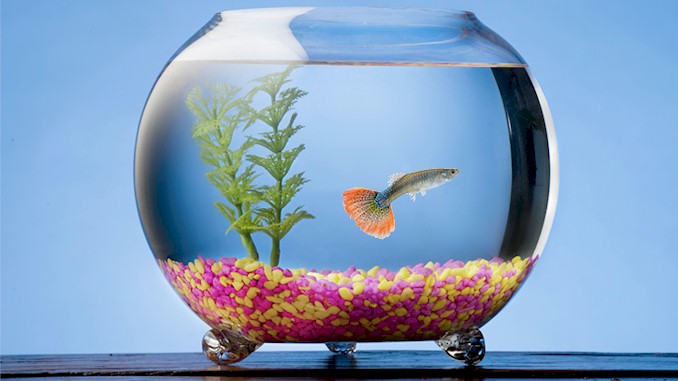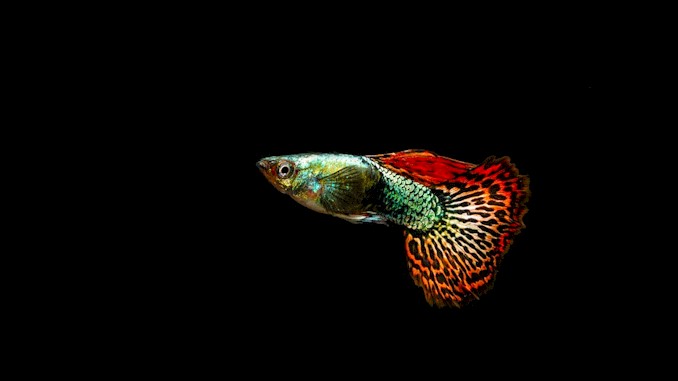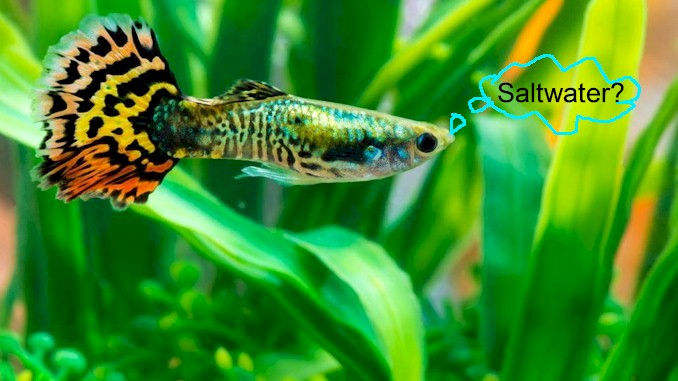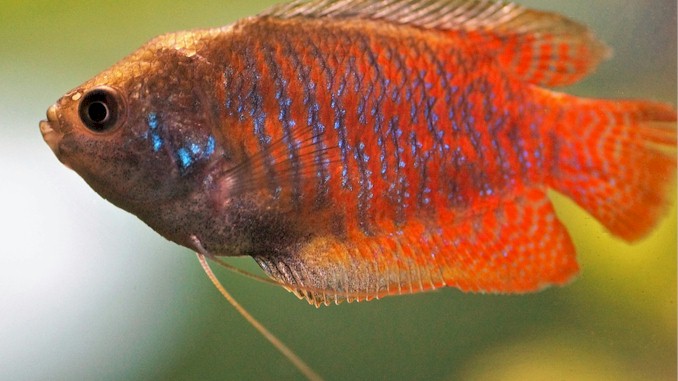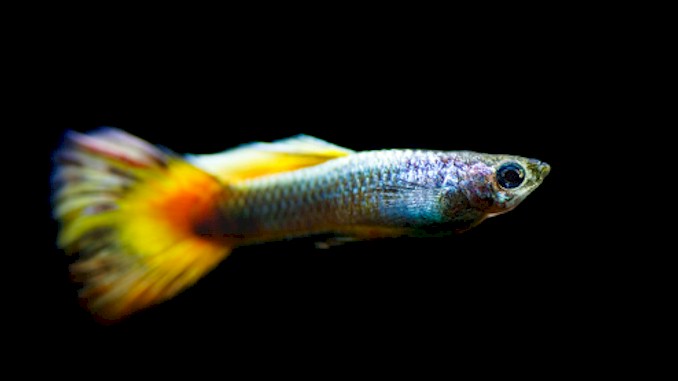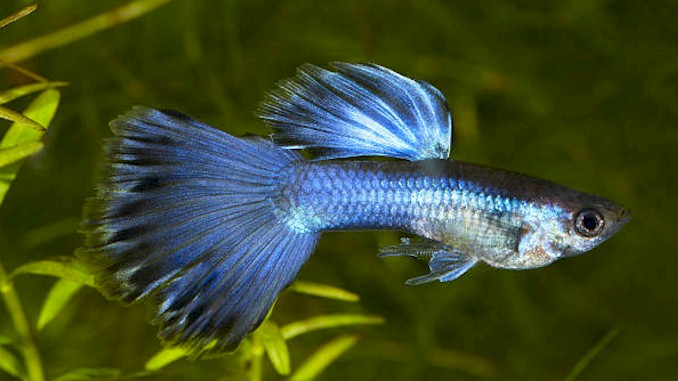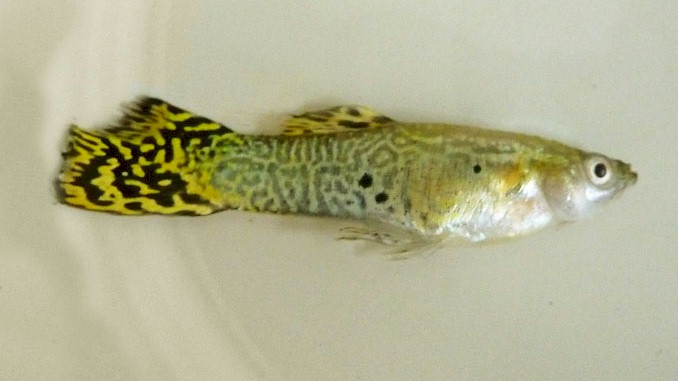Can Guppies Live In a Bowl
If you’ve ever been to a pet store, chances are you’ve seen guppies swimming in small, attractive bowls. While they may look charming, many people wonder if guppies can truly thrive in such a confined space. The truth is, keeping guppies in a bowl is not an ideal situation for their health and well-being. In this article, we’ll explore why guppies need a larger aquarium to live comfortably and how you can provide them with the best possible environment.
Guppies can technically survive in a bowl, it is not an ideal environment for them to thrive in. Bowls do not provide adequate space, filtration, or heating for guppies, which can lead to stress, disease, and premature death.
But that’s not all! In the following paragraphs, I will dive deeper into why guppies cannot live in a bowl and explain the specific care requirements that guppies need to thrive. I will also cover the potential risks and problems that can arise from keeping guppies in a bowl, as well as the benefits of providing them with a proper aquarium. By the end of this post, you will have a comprehensive understanding of why a bowl is not suitable for guppies and what you need to do to keep your aquatic pets happy and healthy. So keep reading to learn more!
The Importance of Aquarium Size and Filtration for Guppies
When it comes to keeping guppies, one of the most important factors to consider is the size of the aquarium. While many people may assume that guppies can live in small bowls or containers, the reality is that these fish require a significant amount of space to thrive. In general, it is recommended to provide at least 10 gallons of water per guppy, which means that even a small group of guppies would require a fairly large tank. This may seem like a lot of water for such small fish, but it is essential for their health and wellbeing.
One of the primary reasons why guppies need a large aquarium is because they are very active fish. They love to swim and explore their environment, and they need plenty of space to do so. In a small bowl or container, guppies may become stressed and unhappy due to lack of space, which can lead to a range of health problems. Additionally, a larger aquarium provides more stable water conditions, which is important for maintaining a healthy and stable ecosystem for your fish.
Another crucial aspect of keeping guppies is ensuring that your aquarium has proper filtration. Filtration helps to remove waste and toxins from the water, which is important for maintaining a healthy environment for your fish. Without proper filtration, the water in your aquarium can quickly become polluted and toxic, which can lead to a range of health problems for your guppies. In addition to removing waste, filtration also helps to oxygenate the water, which is important for the health of your fish.
It is important to note that not all filters are created equal. When selecting a filter for your guppy aquarium, you will want to choose a filter that is appropriately sized for the tank and the number of fish you have. You will also want to consider the type of filter, as different types of filters offer different benefits and drawbacks. For example, some filters may be more effective at removing certain types of waste, while others may be more energy-efficient or easier to maintain.
Overall, the size of the aquarium and the quality of the filtration system are two of the most important factors to consider when keeping guppies. By providing your fish with a large and well-maintained aquarium, you can help to ensure their health and happiness, and enjoy the beauty and charm of these delightful fish for years to come.
Why Bowls Are Not Suitable for Guppies: Risks and Problems
While it may be tempting to keep guppies in a small bowl or container, the truth is that these environments can be very harmful to the health of your fish. There are several reasons why bowls are not suitable for guppies, including the lack of space, limited filtration, and unstable water conditions. Let’s take a closer look at some of the risks and problems associated with keeping guppies in a bowl:
- In order for guppies to thrive and live a healthy life, it is essential to provide them with the right environment. Oxygen is crucial for fish, including guppies, to survive, and as bowls are small in size, they decrease the surface to air ratio. This ratio is significant, as it determines how much oxygen is dissolved in the water, and a higher ratio is necessary for guppies to breathe easily. Therefore, a rectangular tank is a better option as it maintains a good surface to air ratio, providing the required oxygen for your guppies.
- Another issue with using a bowl is the difficulty in maintaining a suitable temperature. Guppies thrive in warmer water, but the small quantity of water in a bowl makes it challenging to regulate the temperature. As a result, it is not possible to install a heater, which is essential for maintaining the desired temperature in the tank.
- Filtration is another important factor to consider when setting up a suitable environment for your guppies. A filter helps to oxygenate the water, removing any toxic waste that could be harmful to your fish. It also helps to separate solid waste from the water, keeping it clean and fresh. However, a bowl is not suitable for a filter, as it is too small to accommodate one.
- The size of the tank is crucial for guppies, as they require enough space to swim and explore their surroundings. A bowl simply does not provide enough space for your guppies to move around comfortably. Additionally, an open-top bowl is not recommended, as your guppies can jump out and suffocate on the floor.
- The curved shape of the bowl also affects the fish’s ability to see the outside world, as it distorts their view. Moreover, mating is stressful and challenging in a bowl. If you keep male and female guppies together, there is not enough space for the fry to swim around, and they may get eaten by the mother guppy. Therefore, a suitable tank is necessary for guppies to mate and reproduce comfortably.
In conclusion, guppies cannot live in a bowl as it is too small to accommodate their needs. To ensure that your guppies live a healthy and happy life, you should consider providing them with a suitable tank that is large enough to allow them to swim around, with the right temperature, oxygen, and filtration system.
Can Guppy Fry Live In a Bowl
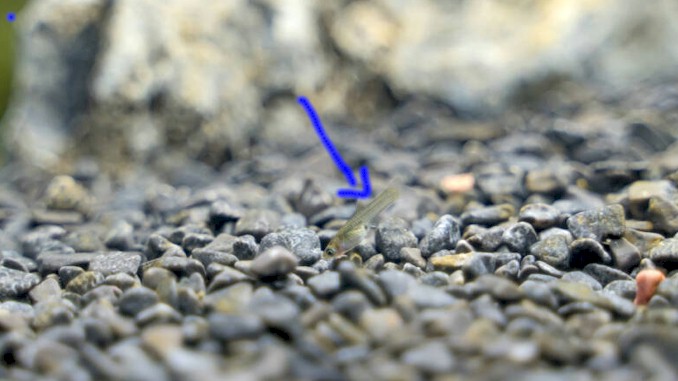
You might think that guppy fry, or baby guppies, can live in a bowl because they are smaller and need less space than adult guppies. However, this is not true. Guppy fry can live in a bowl for a short period of time, but they will eventually need a larger tank with proper conditions to grow and thrive. In this section, I will explain why bowls are bad for guppy fry and what you can do to provide them with a better environment.
The main problem with keeping guppy fry in a bowl is that it does not have a filter or an air pump. A filter is essential for removing waste and toxins from the water and keeping it clean and healthy. An air pump is important for providing oxygen and water circulation for the fish. Without these devices, the water in the bowl will quickly become dirty and polluted by the leftovers of guppies, algae, and other waste. This can lead to ammonia poisoning, which can cause stress, disease, and death for your guppy fry.
Another problem with keeping guppy fry in a bowl is that it does not have a heater or a thermometer. Guppies are tropical fish that need warm water to survive. The ideal temperature range for guppies is between 75°F (24°C) and 82°F (28°C). A bowl does not have any way of regulating or monitoring the temperature of the water. It can easily get too cold or too hot depending on the room temperature or exposure to sunlight. This can cause thermal shock, which can also stress out your guppy fry and make them more prone to illness.
A third problem with keeping guppy fry in a bowl is that it does not have enough space for them to swim and exercise. Guppies are active fish that like to explore their surroundings and interact with each other. A bowl does not offer much room for movement or stimulation for your guppy fry. It can also limit their growth potential as they will not be able to develop their muscles properly.
As you can see, bowls are not suitable habitats for guppy fry. They can only survive in them temporarily until you transfer them to a larger tank with adequate equipment and conditions. If you want your guppy fry to grow up healthy and happy, you should provide them with at least 10 gallons (40 liters) of water per 20-30 fish. You should also equip your tank with a filter, an air pump, a heater, a thermometer, some plants, some hiding places, and some gravel. You should also feed your guppy fry high-quality food twice daily and perform regular water changes every week. By following these steps, you will ensure that your guppy fry have everything they need to flourish!
The Role of Temperature and Lighting in Guppy Health
Maintaining the right temperature and lighting conditions is essential to the health and wellbeing of your guppies. These factors can impact your fish’s behavior, metabolism, and overall health. Let’s take a closer look at the role of temperature and lighting in guppy health:
1. Temperature:
Guppies are tropical fish that require a consistent water temperature between 74 and 82 degrees Fahrenheit. Any fluctuations outside of this range can cause stress and lead to health problems. It is important to use a reliable aquarium thermometer to monitor the temperature of the water regularly. In addition to the water temperature, it is also crucial to maintain a consistent room temperature. Sudden changes in the room temperature can cause the water temperature to fluctuate, which can be harmful to your fish.
2. Lighting:
Lighting is another important factor to consider when keeping guppies. These fish require a consistent lighting schedule to maintain their circadian rhythms and stay healthy. A good rule of thumb is to provide your guppies with 8-12 hours of light per day. It is also important to choose the right type of lighting for your aquarium. Full-spectrum LED lights are an excellent option as they mimic natural sunlight and provide all the wavelengths of light your fish need.
3. Algae Growth:
While algae growth may seem like an aesthetic problem, it can actually impact the health of your guppies. Algae growth in the aquarium can reduce the oxygen levels in the water and lead to poor water quality. To prevent algae growth, it is important to provide adequate lighting for your plants and maintain a consistent cleaning schedule for your aquarium.
4. Importance of Water Changes:
Regular water changes are essential to maintaining a healthy environment for your guppies. Water changes help to remove excess nutrients, waste, and toxins from the water and maintain stable water conditions. It is recommended to perform a 25% water change every two weeks to ensure the health and wellbeing of your fish.
In conclusion, maintaining the right temperature and lighting conditions is crucial to the health and happiness of your guppies. These factors impact your fish’s behavior, metabolism, and overall health. By providing your guppies with the right temperature, lighting, and water changes, you can ensure a healthy and thriving aquarium environment for your fish.
How Many Guppies Can Live In A Fish Bowl?
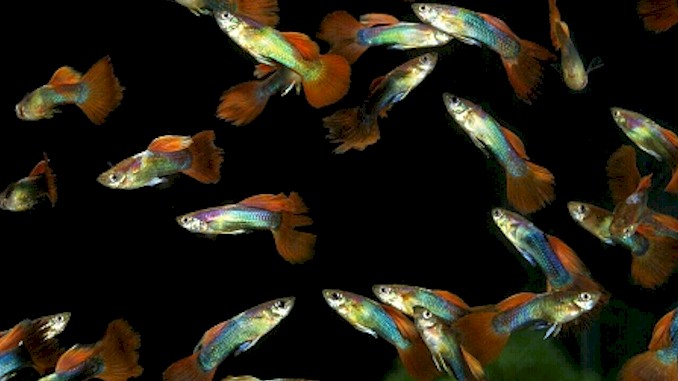
One of the most common questions that guppy owners ask is how many guppies can live in a fish bowl. The answer is not simple because it depends on several factors, such as the size of the bowl, the size of the guppies, their gender, their activity level, their water quality, and their compatibility.
However, as a general rule of thumb, you should follow this formula:
- 1 guppy = 1 gallon (4 liters) of water
- 6 guppies = 6 gallons (24 liters) of water
- 9 guppies = 9 gallons (36 liters) of water
- 12 guppies = 12 gallons (48 liters) of water
- and so on
This means that you should not keep more than one guppy in a 1-gallon bowl or more than two guppies in a 5-gallon bowl. This amount of space will give your guppies enough room to swim around comfortably and avoid overcrowding.
You should also consider the following factors when deciding how many guppies to keep in a bowl:
- The size of the guppies. Guppies can grow up to 2 inches (5 cm) long on average, but females are usually twice as big as males. Therefore, you should allocate more space for female guppies than male guppies.
- The gender of the guppies. Male and female guppies have different behaviors and needs. Male guppies are more colorful and flashy than female guppies, but they are also more aggressive and territorial. They may chase and harass female guppies or other males for mating or dominance purposes. Female guppies are less colorful but more peaceful than male guppies, but they are also more fertile and can produce lots of babies (called “fry”) at a time. Therefore, you should keep a balanced ratio of male and female guppies, such as one male for every three females, or separate them by gender if possible.
- The activity level of the guppies. Guppies are active swimmers that need plenty of space to move around. They also like to explore their surroundings and interact with other fish or objects. Therefore, you should provide them with enough stimulation and enrichment in your bowl, such as plants, rocks, caves, or toys. However, you should not add too many decorations that can reduce the available space or create hiding spots for aggressive fish.
- The water quality of the bowl. Guppies need clean and oxygen-rich water to survive. However, bowls do not have filters or heaters that can maintain optimal water conditions for your fish. Therefore, you should monitor your water parameters regularly with a test kit and change at least 50% of your water every other day with dechlorinated water that matches the temperature and pH of your old water. You should also avoid overfeeding your fish or adding too much food that can rot and pollute your water.
By following these guidelines, you can determine how many guppies can live in a fish bowl safely and comfortably. However, you should remember that bowls are not ideal habitats for guppies in the long term and they will eventually suffer from stress, disease, or death if they stay in them too long. Therefore, you should always aim to provide your guppies with a proper aquarium that meets their needs and allows them to thrive!
How to Keep Guppies Alive In a Bowl
Although I do not recommend keeping guppies in a bowl for a long time, I understand that sometimes you might have no choice but to do so temporarily. Maybe you are moving to a new place and need to transport your guppies in a bowl. Maybe you are waiting for your new tank to cycle and need to house your guppies in a bowl for a while. Maybe you are breeding guppies and need to isolate some fry or adults in a bowl for safety reasons.
Whatever the case may be, if you have to keep guppies in a bowl, you should follow some tips to make sure they stay alive and healthy until you can transfer them to a better environment. Here are some of the most important tips:
- Change the water frequently. The water quality is crucial for your guppies’ survival. Since bowls do not have filters, the water can get dirty and polluted very fast. You should change at least 50% of the water every other day with dechlorinated water that matches the temperature and pH of the old water. You can use a siphon or a cup to remove and replace the water gently without disturbing your guppies too much.
- Ensure adequate oxygen. Guppies need plenty of oxygen to breathe and stay active. Bowls have a rounded shape that reduces the surface area of the water, limiting the amount of oxygen that can enter it. To increase the oxygen level, you should fill the bowl with water only up to its widest part. This will create more surface area for oxygen exchange. You should also use an air pump or an airstone to create bubbles that will circulate and aerate the water.
- Don’t cram the space. Guppies need enough space to swim and exercise comfortably. You should not overcrowd your bowl with too many fish or decorations. A general rule is that each guppy needs at least 2 gallons (8 liters) of water. You should also avoid adding gravel or plants unnecessarily if there is not enough space. Gravel can trap waste and bacteria that can harm your guppies, while plants can compete with your guppies for oxygen.
- Control the temperature. Guppies are tropical fish that need warm water between 75°F (24°C) and 82°F (28°C). Bowls do not have heaters or thermometers, so they can fluctuate in temperature depending on the room temperature or exposure to sunlight. You should monitor the temperature regularly with an external thermometer and adjust it accordingly by adding warm or cold water as needed. You should also keep your bowl away from direct sunlight, windows, vents, or radiators that can affect its temperature.
- Feed them properly. Guppies need high-quality food that contains protein, vitamins, minerals, and fiber. You can feed them flakes, pellets, live foods, freeze-dried foods, or vegetables such as lettuce, peas, or cucumbers. However, you should feed them only one or two times a day in small amounts at a time. Never add more than your guppies can eat within 2 minutes because any leftover food will rot and pollute your water.
By following these tips, you can keep your guppies alive in a bowl for some time until you move them to a larger tank with better conditions. However, you should remember that bowls are not suitable habitats for guppies in the long run and they will eventually suffer from stress, disease, or death if they stay in them too long. Therefore, you should always aim to provide your guppies with a proper aquarium that meets their needs and allows them to thrive!
How to Set Up a Suitable Aquarium for Your Guppies
When setting up an aquarium for your guppies, it is important to create a suitable environment that meets their needs. Here are some key factors to consider when setting up your aquarium:
1. Aquarium Size:
Guppies require a minimum tank size of 10 gallons, although larger tanks are preferred as they provide more space for swimming and reduce the risk of overstocking. A larger tank also makes it easier to maintain stable water conditions and reduces the frequency of water changes.
2. Filtration:
A suitable filter is essential to maintaining good water quality in your aquarium. Choose a filter that is rated for at least twice the volume of your aquarium and ensure that it is properly maintained. A filter helps to remove waste and debris from the water, improving water quality and reducing the risk of health problems for your fish.
3. Temperature:
Guppies are tropical fish and require a water temperature between 72-82°F (22-28°C). Use a reliable aquarium heater to maintain a consistent temperature in your tank. Rapid temperature changes can cause stress and health problems for your fish, so it is important to monitor the temperature regularly.
4. Lighting:
Lighting is important for both the health of your plants and the overall well-being of your guppies. Guppies require a regular light cycle of around 8-12 hours per day. Use a timer to ensure that your aquarium light turns on and off at the same time each day. Avoid placing your aquarium in direct sunlight, which can cause temperature fluctuations and encourage algae growth.
5. Substrate and Decorations:
Choose a substrate that is suitable for your aquarium plants and provides a natural environment for your fish. Avoid using sharp or rough substrates that can harm your guppy’s delicate fins. Decorations such as rocks, driftwood, and plants can provide hiding places for your fish and create a more natural environment.
6. Water Changes:
Regular water changes are essential to maintaining good water quality in your aquarium. Aim to change 10-20% of the water in your tank every 1-2 weeks. Use a dechlorinator to remove chlorine and chloramine from tap water before adding it to your aquarium.
In conclusion, setting up a suitable aquarium for your guppies requires careful consideration of their needs. Choose an appropriate tank size, ensure that your filter is properly maintained, maintain a consistent water temperature, provide adequate lighting, choose suitable substrate and decorations, and perform regular water changes. By following these guidelines, you can create a healthy and thriving environment for your guppies to thrive.

